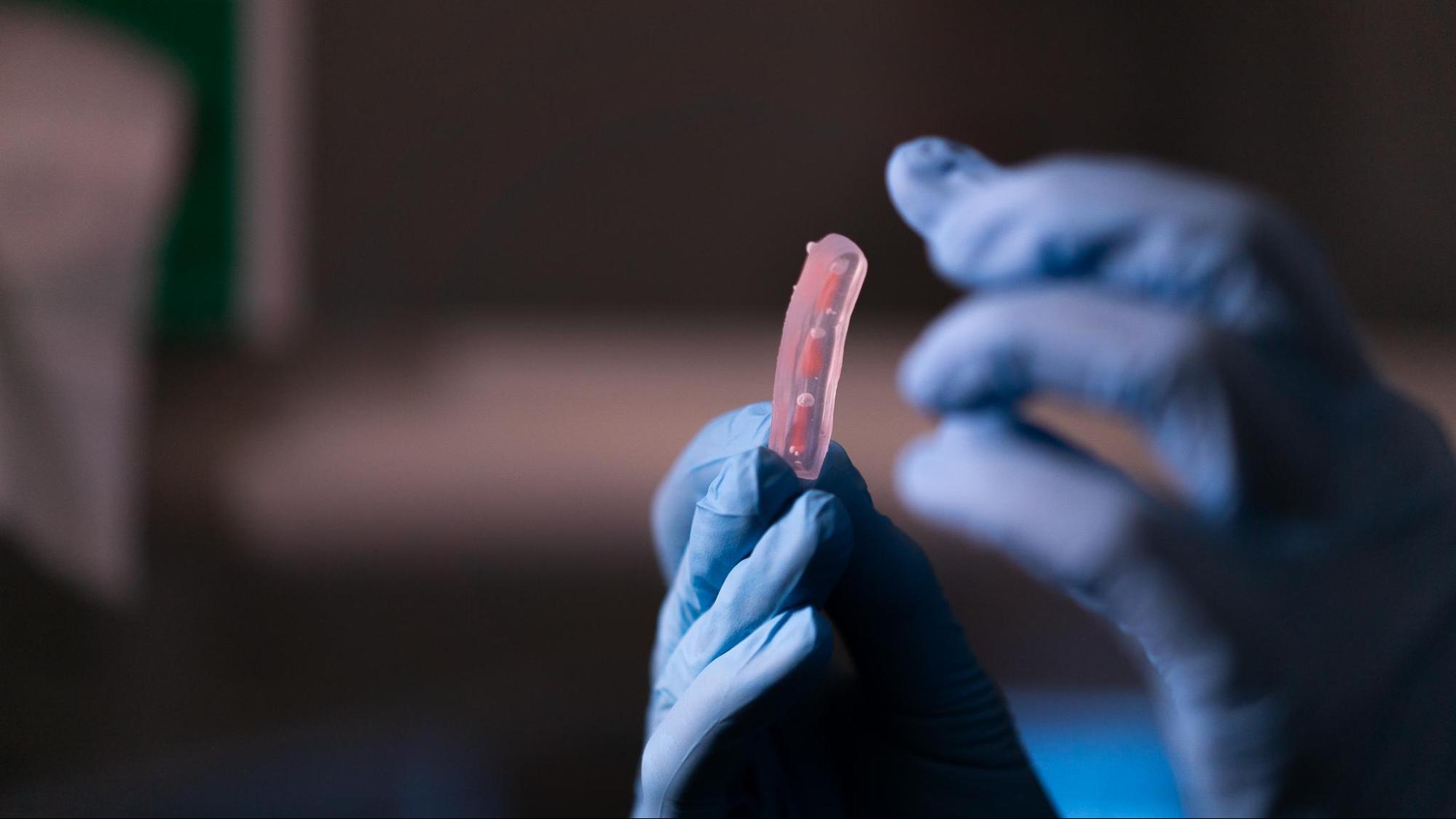EPFL researchers have developed an elastomer-based ink, which can be used to create hinge-free joints in robots.
Elastomers, with variable stiffness, had traditionally been unable to achieve complex 3D structures until the advent of DNGEs (3D printable double network granular elastomers). This ink, formed from elastomer microparticles can be combined to form two elastomeric networks, which researchers can fine-tune for stiffness.

Moreover, DNGEs, unlike hydrogels, ensure water-free structures, enhancing stability over time. Remarkably, this technology is compatible with standard bioprinters, democratizing its use. Potential applications span from motion-guided rehabilitation devices to robot-assisted crop harvesting.
“Elastomers are usually cast so that their composition cannot be changed in all three dimensions over short length scales,” said Esther Amstad, head of the Soft Materials Laboratory in EPFL’s School of Engineering.
“To overcome this problem, we developed DNGEs: 3D-printable double network granular elastomers that can vary their mechanical properties to an unprecedented degree.”
The Soft Materials Lab, at the forefront of this research, is already integrating responsive materials and electrical connections into DNGE structures, opening the tech up to a wider range of applications.
Source: actu.epfl.ch
Come and let us know your thoughts on our Facebook, X, and LinkedIn pages, and don’t forget to sign up for our weekly additive manufacturing newsletter to get all the latest stories delivered right to your inbox.

